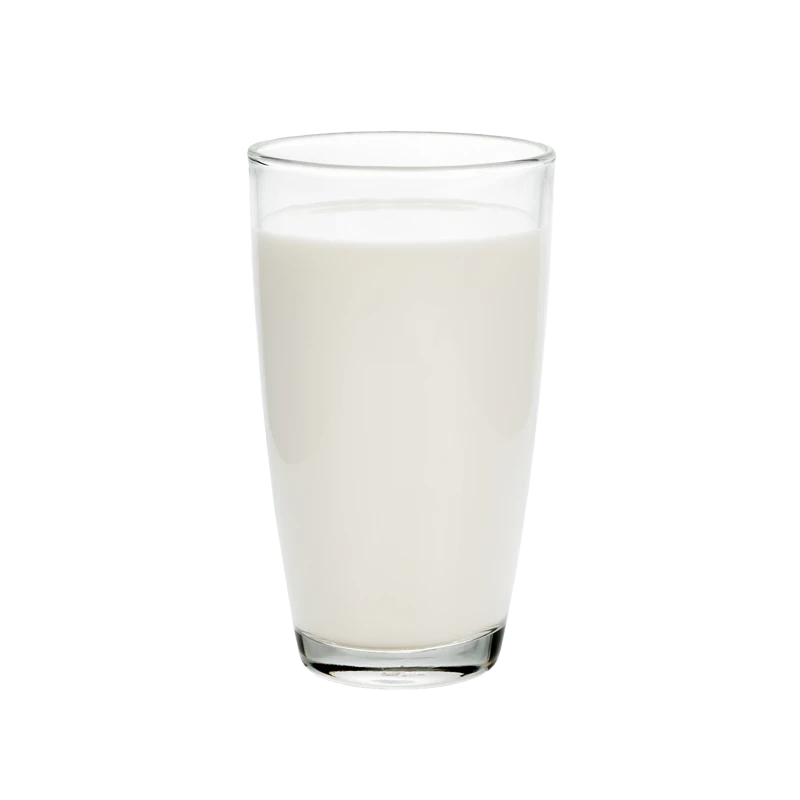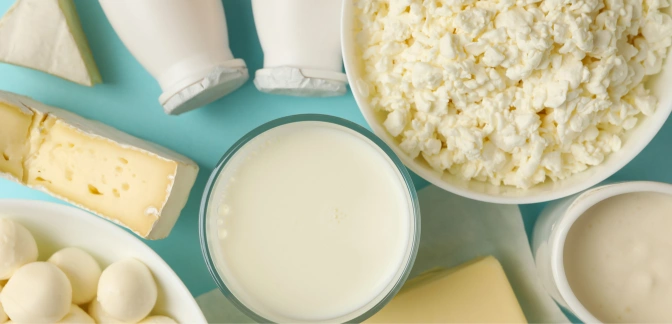Milk — Nutrients, Health Benefits, and Shopping Tips

Written by Listonic Team
Last update on September 4, 2024
Nutrition facts
Nutrition facts
Amount per 100 g
Calories
🔥 42 kcal
| Nutrition per: 100 g | Value | % Daily Value* |
|---|---|---|
| Carbs | 5 g | 1.82% |
| Fiber | 0 g | - |
| Sugars | 5 g | 10% |
| Glycemic Index | 30 | - |
| Protein | 3 g | 6% |
| Sodium | 44 mg | 1.91% |
| Total Fat | 1 g | 1.28% |
*The % of Daily Value (DV) tells you how much a nutrient in a serving of food contributes to a daily diet. 2,000 calories a day is used for general nutrition advice.
Nonfat milk has the least amount of fat and calories but still provides all of milk’s nutrients.
Encyclopedia of Foods. A Guide to Healthy Nutrition
30
🟢 Low Glycemic Index
1 g
🥕 Low Fat Content
Did you know?
Health benefits
- High in protein, essential for muscle growth, repair, and overall body function.
- Rich in calcium, which supports strong bones and teeth and reduces the risk of osteoporosis.
- Contains essential vitamins and minerals such as Vitamin D, Vitamin B12, potassium, and phosphorus, which support overall health and well-being.
- Provides healthy fats, supplying energy and supporting cell function (particularly full-fat milk).
- Supports hydration due to its high water content.
Health risks
- High fat content particularly in full-fat milk, which can raise cholesterol levels and increase the risk of heart disease when consumed frequently.
- Potential for lactose intolerance symptoms such as bloating, gas, or diarrhea in individuals sensitive to lactose.
- High calorie content in full-fat milk, which can contribute to weight gain if consumed in large quantities.
- Risk of contamination with harmful bacteria such as Salmonella or E. coli, particularly if the milk is not properly pasteurized or stored.
How to choose milk
Milk should have a clean, pure white appearance and a smooth, liquid consistency. It should smell fresh and slightly sweet, without any hints of sourness or spoilage. The texture should be uniform, without any particles or separation.
Do not use milk that has an off odor or a yellowish tint, as these are indicators it is not fresh. Good quality milk should taste clean and creamy, serving as an essential daily beverage and a versatile cooking ingredient.

How to store milk
Milk should be stored in the coldest part of the refrigerator, typically the back of a shelf. Keep the carton tightly closed to prevent contamination and absorb odors. Properly stored milk can remain fresh until its expiration date.
Leaving milk out at room temperature can lead to rapid spoilage. Avoid storing milk in the refrigerator door where temperatures fluctuate. Always return milk to the refrigerator promptly after use and keep it tightly sealed to maintain its freshness.
✅ Extra Tip
How long does it last?
Milk can last for 1-2 weeks in the refrigerator. Always check the expiration date on the packaging for the best quality. For longer storage, milk can be frozen for up to 3 months.
What to do with leftovers?
Leftover milk can be used in a variety of sweet and savory dishes. Use it as a base for sauces like béchamel or cheese sauce, or mix it into baking recipes such as cakes, muffins, or pancakes where it adds moisture and richness. Milk is also great when used in custards or puddings for creamy desserts.
Use milk to make a smoothie by blending it with fresh or frozen fruits, or add it to soups and stews to create a creamy texture. If you have a lot of milk, consider making a batch of homemade ice cream or using it in a rice pudding with cinnamon and raisins. Milk can also be used in coffee or tea for a creamy finish, or warmed with honey and spices for a comforting drink. For a quick snack, enjoy milk with cereal or cookies, or use it in scrambled eggs for a fluffier texture.
👨⚕️️ Medical disclaimer
How milk supports specific health conditions
Milk is a nutrient-rich beverage providing calcium and vitamin D, supporting bone health and helping prevent osteoporosis. It is also a good source of protein, promoting muscle health and tissue repair. Milk contains essential vitamins like B12, supporting brain function and energy metabolism. Its balanced nutrient profile makes it a valuable component of a healthy diet for both children and adults. Lactose-free options are available for those with lactose intolerance.
Discover products from other categories
Listonic Team
Fact-checked
Our editorial team checked this article to make sure it was accurate at the time of publishing it.
Get the top-rated shopping list app on your phone!







